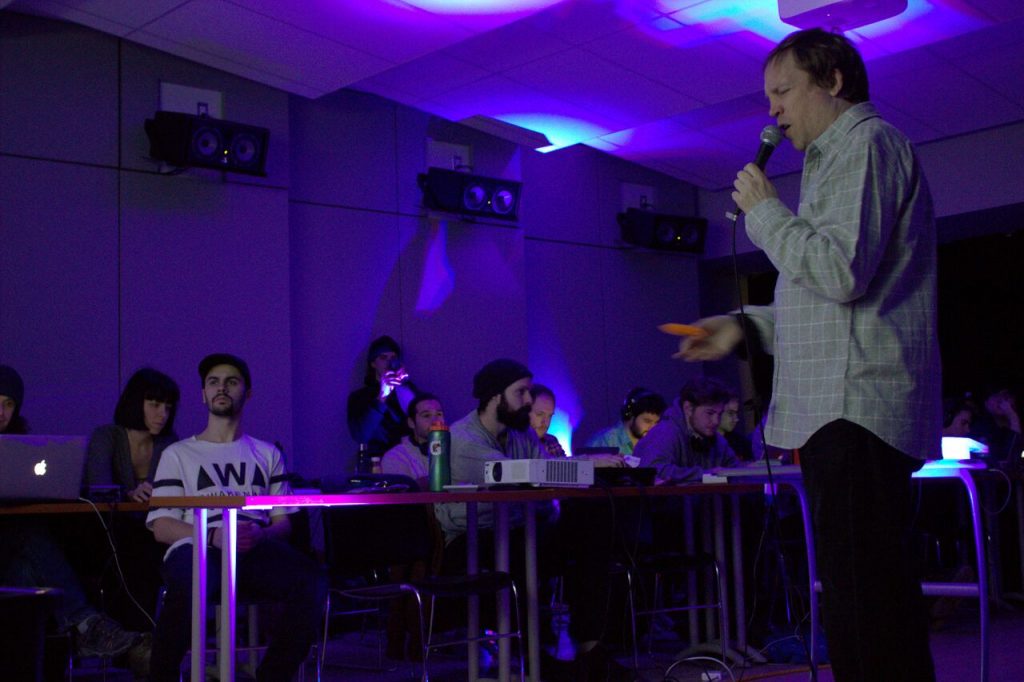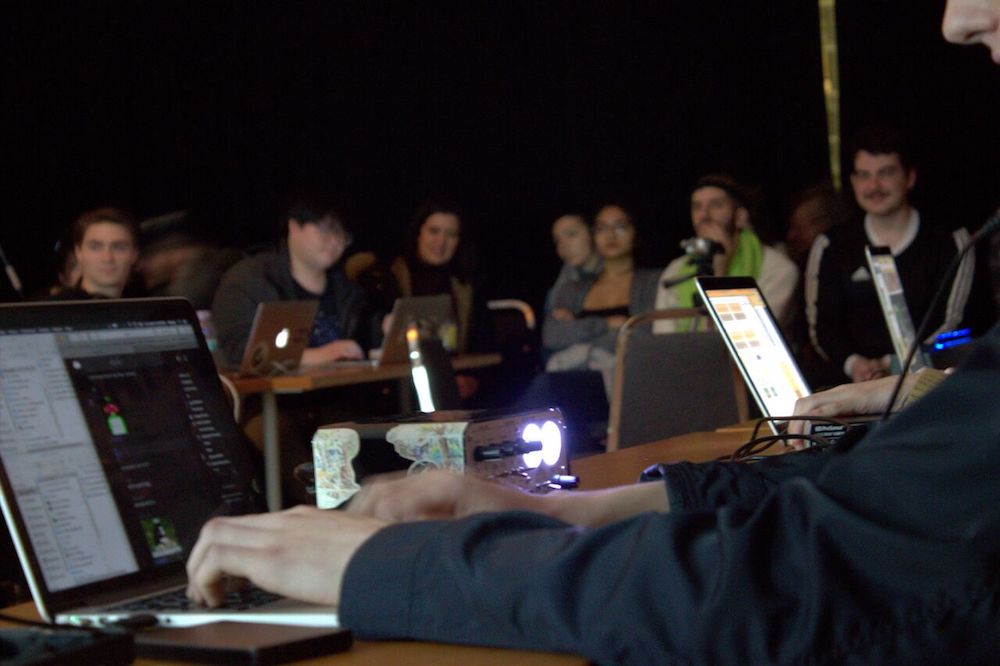A look at the Concordia Laptop Orchestra which is changing the way we think about electronic music
The trend of live electronic music has gained a lot of popularity over the last 10 years. DJs, composers and sound artists in general have taken sound and altered the world’s traditional perception of it completely.
Students and professors in the electroacoustic studies program at Concordia University have made a great impact in the sound art scene as well, creating and manipulating the auditory in classes like the one that serves as the home of the Concordia Laptop Orchestra, otherwise known as CLOrk.
The Concordia Laptop Orchestra—an orchestra composed of students creating and manipulating sound on their laptops—took off in January 2011 and has since evolved into a “democratic, experimental environment for realizing new ideas, new technologies, new performance and new communication practices,” according to Eldad Tsabary, the founder and director of CLOrk, who has been teaching electroacoustics at Concordia since 2005. Tsabary is now the coordinator for the program.
According to him, electroacoustic studies focuses on the creation, manipulation and perception of sound. It is not about using sound to produce music, but rather using sound as the music.
“The field of electroacoustics is fascinating to me because it is in constant and rapid flux,” said Tsabary. “It is a technology-dependent practice […] and it also transforms really fast artistically, where artists and researchers are constantly looking to update and innovate the modes of creation, mediation and collaboration.”
Tsabary’s role as a professor has focused on the development of aural training and live practices—both fascinating aspects of the field which have influenced his work with CLOrk.
Acting as an exercise in improvisation, collaboration and experimental sound, Tsabary uses CLOrk to provide students with the opportunity to collaborate and incorporate the work of other artists, such as musicians, dancers, poets, actors or singers, into their performance.
“The collaborator is often the ‘guest of honour,’ so to speak, serving as a shared focus of attention and direction,” Tsabary said. “While the orchestra focuses on a guide and follows their lead, the soloist is inevitably following the orchestra’s voice as well […] The result is really a conversation.”
At a CLOrk concert on Feb. 8, one of the guests of honour was local performer Édward Fuller. He stood in the centre of the room at a microphone, with no shoes on, surrounded by approximately 25 laptop orchestra members. He spoke in improvised, poetic, sometimes broken sentences, guiding and being guided by the orchestra’s sounds.
At the front of the room during their performance, an online chat screen was projected, featuring real-time conversation between each of the laptop orchestra performers, as well as between the performers and the audience.
“When I felt that the orchestra had developed the ability to listen and support a synergistic performance, we added online chat,” Tsabary said. “It provides us versatility, real-time musical discussion and quick, collective troubleshooting when something does not work well. Adding the audience into the conversation is fun, and it breaks down the traditional distance between audience and performer.”
While the performances are often entirely improvised, each class leading up to a concert acts as a rehearsal. In these classes, students meet with Tsabary to discuss and improvise, deciding what works and what does not. According to Tsabary, there is a great deal of preparation that goes into a laptop orchestra concert.
“There are technical preparations to make and strategies to develop, like good communications and musical flow. In the first week of the semester, we did not use any mediation means, but simply played, listened to each other, discussed, raised problems, proposed solutions, tried them out and continued to do so in an iterative manner,” he said.

Tsabary said that while there is never really a specific goal or plan going into one of the concerts, his ideal CLOrk experience consists simply of a “well-balanced collective creation.” Ultimately, he said his wish is for a seamless group experience where each student feels they have contributed equally and is satisfied with the role they played in the process.
One of Tsabary’s electroacoustics studies students, Kasey Pocius, participates in CLOrk rehearsals and concerts regularly. They said that while the program does provide experience with live performance, improvising and working in large groups is not explored outside of CLOrk.
“I personally find CLOrk works quite well as a continuation of the work covered in the ear training classes, as attentive listening is incredibly important in the laptop orchestra context,” Pocius said.
According to them, the grading system for the Concordia Laptop Orchestra class is very unique, as the students are solely evaluated on their attendance. Pocius said the improvisatory nature of CLOrk does not lend itself to a more traditional grading system, so it is difficult to prevent students from taking the course just to receive an “easy A.”
Nonetheless, they are happy with how the last concert went. Tsabary has had a positive influence on the program overall, according to Pocius.
“He continues to push research in terms of ear training software and practice,” they said. “In the more discussion-based courses I have had with Eldad, he always tries to foster a good environment for discussion.”
While electroacoustics students have learned a lot from Tsabary, he said he has also learned a lot from his students. As a composer himself, Tsabary has noticed his own compositional practice mixing into the laptop orchestra.
“I find it way more exhilarating to create within the group setting than to compose individually,” he said. “It is a lot of fun to allow your ideas to interact and cross-fertilize with others’ ideas and to witness how a collective imagination realizes in a cohesive orchestra performance. To me, it is a next-level type of creation, where ownership is given away in exchange for individual growth.”
Photos by Candice Pye




